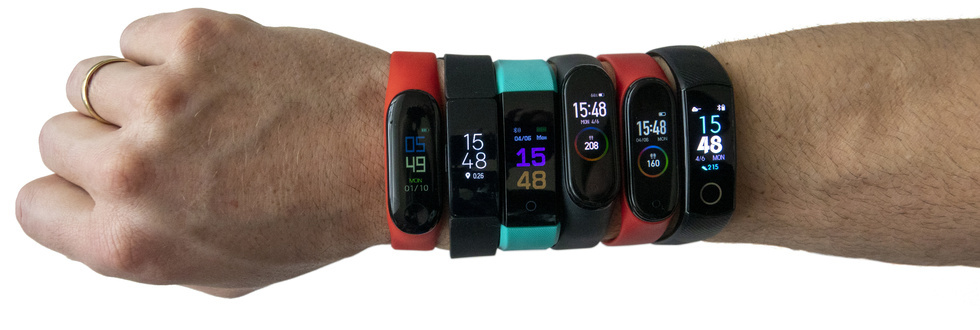Why Does One Seek to Quantify the Self? Big Data’s Influence on the Body
This blog post briefly explores the themes of big data and the quantified self. Using boyd and Crawford’s article “Critical Questions for Big Data,” I provide some considerations for why an average person like my father seeks to convert his body into legible data sets to be collected, analyzed, and optimized.

My father keeps meticulous excel sheets of all the blood work he has had done throughout his life. He is constantly searching for the latest in health watches, buying the latest wearables of biometric tracking. He keeps a smart scale in his bathroom that connects with an app that visually displays his daily stats in body fat percentage, water weight, BMI, and more. He can give you a data point for almost every biological factor of his body. His body is simply a collection of data sets that can be manipulated to produce the desired outcome. This is the quantified self, what Greenfield calls the obsession with optimization of the self as a reflection of late-stage capitalism and datafication (26). boyd and Crawford would perhaps see my fathers’ actions as a result of the socio-technical phenomena of big data, “technology’s interaction with the social ecology” that “frequently have environmental, social, and human consequences that go far beyond immediate purposes of the technical devices and the practices themselves” (662).
Big Data
In 2008 Chris Anderson, editor in chief of Wired, boldly claimed that “with enough data, the numbers speak for themselves” (Anderson). Anderson suggests that big data can replace the current scientific and academic rigor and offer “a whole new way of understanding the world” (Anderson). Indeed, “Big Data reframes key questions about the constitution of knowledge, the processes of research, how we should engage with information, and the nature and the categorization of reality” (boyd and Crawford 665). In their article boyd and Crawford offer six critiques of big data as applied to academic and scientific research; this blog offers two of their critiques applied to the example of the quantified self. boyd and Crawford’s critique of big data explains why individuals take up an interest in the quantified self.
Big/Small Data
Considered a vague term by boyd and Crawford, big data denotes “possibilities of storing, processing, and transmitting unprecedented amounts of data” (van dee Ven 323). Data generated by the quantified self may not seem to fit the traditional idea of big data. However, the aggregation of all data sets generated by an individual over an extended period can become unmanageable. Further, group quantified self-projects consist of large data sets collected by many individuals (Swan 88).
The Quantified Self
At around the same moment, Wired editor-in-chief Chris Anderson proclaimed his acclamation for big data, Wired editors Gary Wolf and Kevin Kelly led the quantified self-movement. The quantified self (QS) is “any individual engaged in the self-tracking of any kind of biological, physical, behavioral, or environmental information” (Swan 85). Generally, data is generated and collected for the productive goal of acquiring information to act upon it. Any data point can be tracked for analysis, “weight, energy level, mood, time usage, sleep quality, health, cognitive performance, athletics, and learning strategies” (Swan 85). The understood goal of tracking is to “bring order, understanding, manipulation, and control to the natural world, including the human body” (Swan 86). Today the quantified self “manifests in the form of wearable biometric sensors: devices that collect the various traces of our being in the world and submit them to the network for inspection and analysis” (Greenfield 27). The body is “made legible in order that they may be rendered subject to the exercise of will, and brought under at least some semblance of control” (Greenfield 26).
Big Data as Knowledge
The first critique of big data put forth by boyd and Crawford is that “Big Data changes the definition of knowledge” (665). As Fordism changed the nature of production, labor, and society in the early 20th century, so does big data in that era we live. boyd and Crawford suggest that big data is a system of knowledge that shifts the perception of knowledge itself. It rests on the ‘myth’ that “large data sets offer a higher form of intelligence and knowledge that can generate insight that were previously impossible, with the aura of truth, objectivity, and accuracy” (boyd and Crawford 663). Similarly, Gitelman and Jackson state that there is now a perception that data comes before the fact, the starting point of information. Thus, “this shared sense of starting with data often leads to an unnoticed assumption that data are transparent, that information is self-evident, that fundamental stuff of truth itself” (2). As big data techniques are weaved into daily life, society works towards understanding the world from a quantified perspective. A compulsion to see all dimensions of life quantified, reality as a set of numbers (van de Ven 323). The quantified self is an expression of this mission of ‘reality in data.’ Greenfield offers the example of a young woman who “cross-referenced her online purchases, entertainment choices and dating decisions against her menstrual cycle and found among other things she only ever purchased red clothing when she was at her most fertile” (28). Anderson claims that the numbers speak for themselves; however, what do they say? What reality lies in the data collected by my father.
Big Data as Truth
boyd and Crawford’s second critique of big data is that its “claims to objectivity and accuracy are misleading” (666). Big data seem to hold the status of being objective, the idea that things exist in and for themselves (667). However, as Lev Manovich explains, “data [do] not just exist,” they must be “generated” (qtd. In Gitelman and Jackson 3). There lies a conscientious choice of what to gather and how. Most wearable trackers measure sleep quality by monitoring body movements and heart rate to determine how long the user slept and the person’s sleep stage (Reid). These means of measurement are unquestioned, and the tracker’s results are assumed objective. However, researchers have found that wrist-worn trackers do not gather all the data necessary to produce accurate sleep-monitoring results (Reid). Greenfield states that generated data can be acted upon to produce some outcome however, “this outcome was always already nestled within the data, from the moment of its collection” (45). Thus, the illusion of objectivity is shattered when human interpretation is present from the conception of data.
Conclusion
boyd and Crawford’s critics of big data offer an explanation on why a person like my father would be driven to quantify his body. The idolization of big data as knowledge and truth impacts the academic and scientific community and changes perception in society at large. Big data’s underlying principles drive people like my father to seek the flesh and bone truth and knowledge of his body in data sets.

Works Cited
Anderson, Chris. “The End of Theory: The Data Deluge Makes the Scientific Method Obsolete”. Wired, 23 June 2008, https://www.wired.com/2008/06/pb-theory/. Accessed 1 October 2021.
boyd, danah and Kate Crawford. “Critical Questions for Big Data.” Information,
Communication & Society, vol.15, no. 5, 2012, pp. 622-679.
Gitelman, Lisa and Virginia Jackson. Introduction. “Raw Data” is an Oxymoron, edited by Lisa Gitelman, The MIT Press, 2013, pp. 1-14.
Greenfield, Adam. Radical Technologies: The Design of Everyday Life, Verso, 2017.
Reid, Matthew. “Are Sleep Trackers Accurate? Here’s What Researchers Currently Know”.
The Conversation,12 January 2021 https://theconversation.com/are-sleep-trackers accurate-heres-what-researchers-currently-know-152500. Accessed 1 October 2021.
Swan, Melanie. “The Quantified Self: Fundamental Disruption in Big Data Science and Biological Discovery.” Big Data, vol. 1, no. 2, 2013, pp. 85-99.
Van de Ven, Inge. “The Monumental Knausgard: Big Data, Quantified Self, and Proust for the Facebook Generation.” Narrative, vol. 26, no. 3, 2018, pp. 320-338.